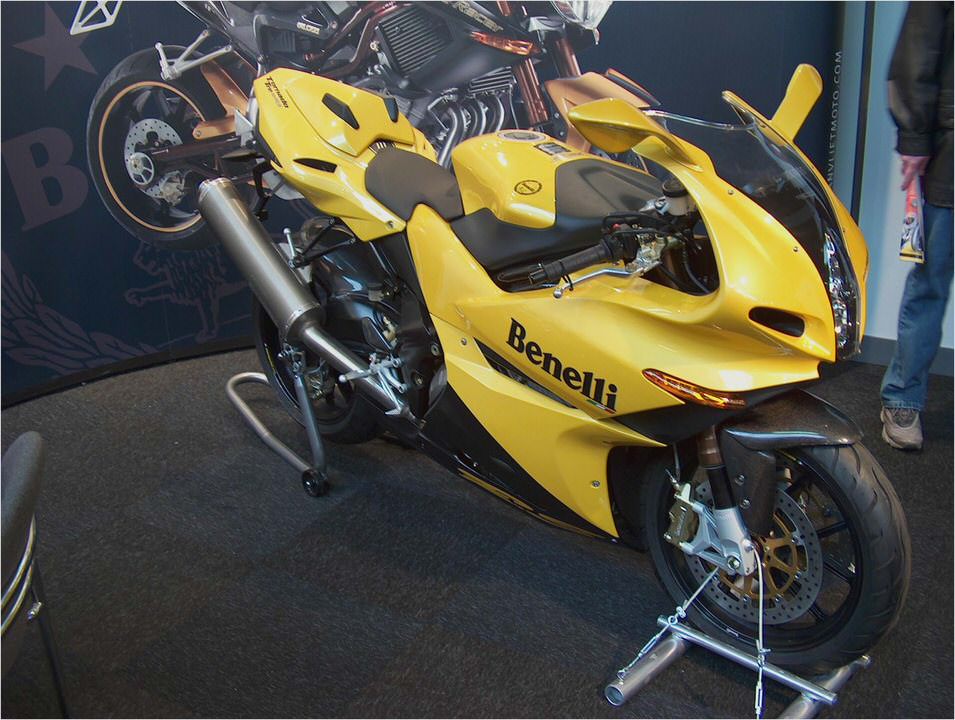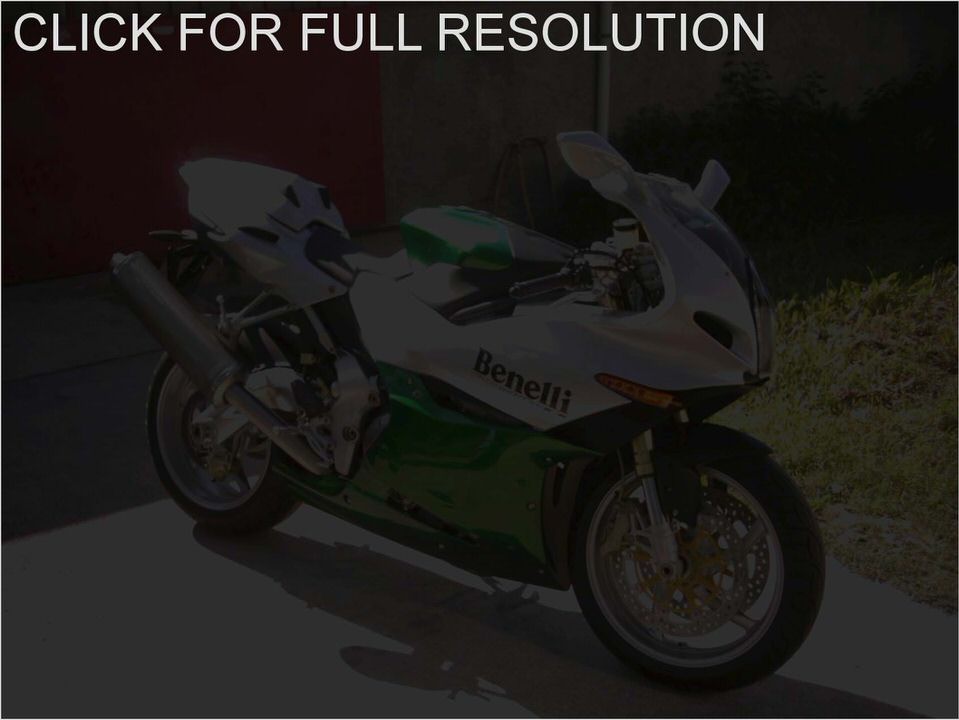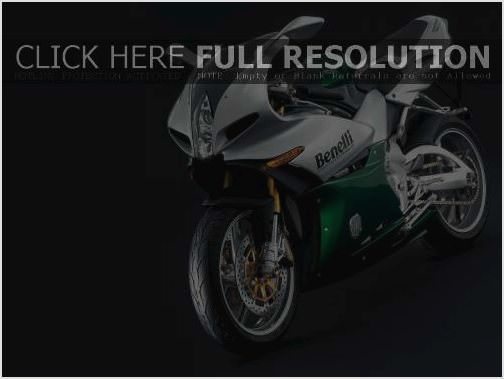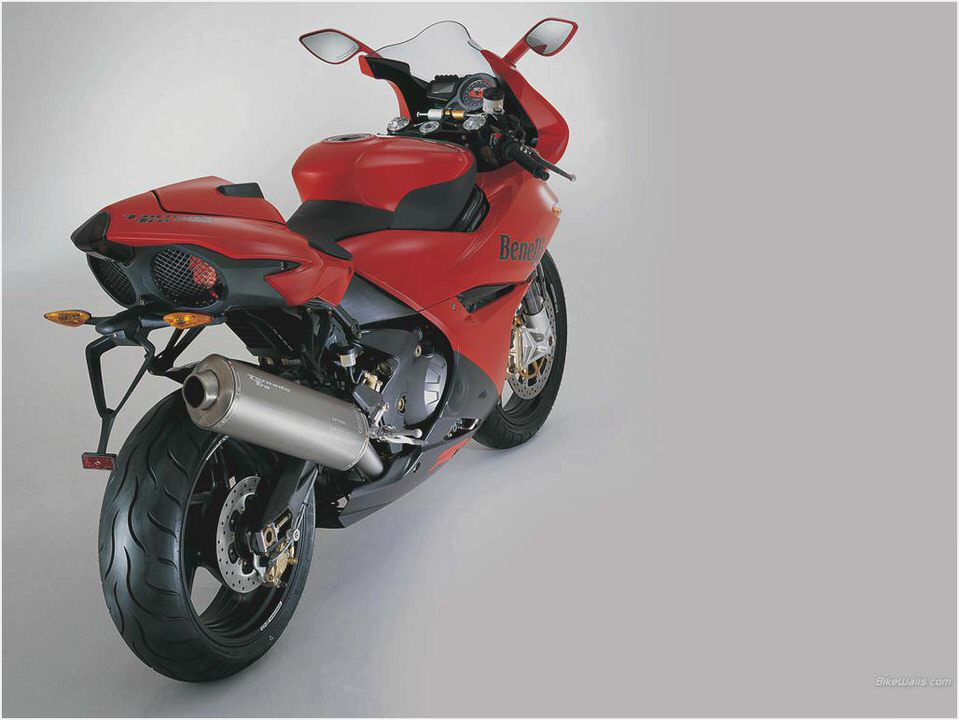
Benelli Tornado 900 Tre Limited Edition – 2002
Tornado Tre-at!
Good things come to those who wait, or so they say. Well we’ve had to wait a long time for the Tornado since it was first shown to a stunned audience in July 1999. It’s taken the Benelli guys a while to get the bike into production but now the first bikes are rolling off the Benelli production line.
Glenn Le Santo travelled to the Benelli HQ in Pesaro, Italy to see if the Tornado Tre Limited Edition is a good thing and was worth waiting for.
One of the great things about being a motorcycle journalist is that I often see a fantastic new bike at a show and think I must ride that! Unlike back in the mists of time when I was a flat-broke despatch rider visiting the annual bike shows at the NEC in England, I now actually stand a good chance of riding the latest subject of my drools! And so it was to be with the Benelli Tornado.
When I first clapped my jaded eyes on the Benelli Tornado at the Milan motorcycle show way back in 1999 I was, like most of those around me, frankly amazed. The bike looked drop-dead gorgeous. It was a radical step in a new direction with its sharp styling and stacked front lights.
It was something really different from the shell-suited Jap-rockets and even the king of moto-sartorial elegance itself, the Ducati 916. Styling was radical, and the radiator under the seat led to a wasp-waisted form that looked cool even if the engine might not be with such a configuration. Twin yellow propellers actually cooling fans at the rear finished off the mouth watering visuals.
From that moment on I promised myself I’d get to ride that bike.
Fast-forward almost three years. As I fastened the strap of my Shark helmet with the Tornado number three of 150 idling in front of me I realised that the moment had finally come I was actually going for a ride on a Tornado! But would the bike live up to my expectations? Or would I find it a big let down as I have with one or two other bikes I’d lusted after a ride on in the past?
There was only way to find out, so I prodded the exquisitely fashioned gear lever and selected first.
My first impressions were mostly good. But the rear mounted radiator and air ducts that route cold air to it make the seat height on the high side, but I’m tall so it didn’t bother me in the flat ground of the Benelli car park. Later on when attempting to turn the bike on a really steep Italian village road I was struggling to reach the ground on the downward side of the slope.
Shorter riders would probably have bailed at this point.
View Slideshow
Out on the road the thing that grabbed my attention first and foremost was the fantastic exhaust noise. Music to the ear poured from the single Titanium kit end-can. The Tre Limited Edition comes with an EU stamped pipe on the bike but a fruitier, ahem, ‘track use only’ pipe is included in the little box of goodies that accompany each bike. The noise stirred memories of my Laverda Jota I owned as a kid – noisy, raucous and slightly rough, a signature noise from a triple.
There’s a hint of Triumph’s Daytona there, including a measure of the Trumpet’s mechanical rustle. Benelli also include a paddock stand, a bespoke bike-cover, adjusters for swing-arm ride height and steering head angle and a different rear sprocket to change the gearing ratio in the box with the pipe.
You’d have to be a soulless type to resist fitting the kit pipe, thus liberating the triple treat tunes waiting to howl free from the 898cc triple. I love the sound of a three and the Tornado has a sound that’s all-too easy to love. I couldn’t resist cracking the throttle wide open and howling the bike up and down to the red line just for the hell of it as I rode out into the hills around Pesaro.
Compared to the kit pipe the standard sounds very sanitised.
Benelli have been working hard trying to perfect the fuel injection mapping on the Tre. It’s something that garnered negative comment from testers of the pre-production model. But gradually Benelli have chased out most of the gremlins, which were mainly hanging around in the low rev range.
The bike still needs a careful technique to start it once it’s hot, this involves not touching the throttle when you stab the starter button and then giving it a deft and exact twist once she begins to fire. Benelli hope to have the last slight imperfections ironed out soon and of course, with EFI, any progress is easy to retro fit to older bikes.
But I was pleasantly surprised to find the bike ran very well at low revs, despite early reports, and it pulled easily from just over 2,500 revs without hesitation. The mid range was very strong and the bike revved to the redline easily. There’s a degree of hunting back and forth if you hold a very small throttle opening, but then I’ve experienced exactly the same feeling from the likes of BMW’s 1150 flat twin range!
The bike also tends to pick up too sharply when coming off idle. It’s not noticeable in hard use but if you’ll notice it in heavy traffic should you be foolish enough to ride the bike in such conditions. Sagem, who developed the single injector per cylinder system, were also responsible for the injection management on the Triumph TT600 four. The problems were very similar on that bike.
No surprise then to hear that Sagem recently went bust!
Being a triple it’s not as smooth as a four, but then it doesn’t beat as hard as a twin either. Instead it occupies a delicious area in between that I’ve been enjoying ever since I owned a Laverda Jota (also an Italian triple) far too long ago to want to admit in public! At the upper rev range you can feel the motor vibrating through the handlebars – but I didn’t find it uncomfortable or intrusive in the least.
The mid range is possibly the best part of the motor, riding the big 100N torque wave at around 5,000 to 9,000 rpm is addictive especially when done to the accompaniment of that open pipe! The 898cc twelve-valve DOHC triple is inclined forward by 15 degrees in the chassis. The engine is fitted with a balance shaft.
The bike isn’t as brain-out fast as the R1 but neither did it feel slow. It’s hard to gauge the true performance of a sports bike without the aid of timing lights and a three-mile long empty airstrip but it’s by no means a slug! There is a strong kick in the pants in the mid-range and a pretty determined surge all the way to the 11,500 redline.
Low down is also impressive, there’s plenty of guts in this motorcycle once you’ve stepped over the very low rev hesitancy still lurking in the EFI set-up.
The bike, at £22,500 new (UK), isn’t going to be raced much; in fact I doubt that many a Tornado Tre will make it out of the glass display case. That’s sad because anyone who buys one and doesn’t ride it may well be maximising his investment but he’ll definitely be missing the fantastic experience of riding this lusty triple.
The six-speed cassette gearbox was very sweet and light and the dry clutch was progressive, unobtrusive and also very light. The clutch did start to complain when it was thoroughly abused in 90 degree air temperatures while messing about for pictures in a small Italian village. The village was set on a very steep hill and turning the bike and riding slowly up and down the main street for photos put stacks of heat into the engine, the clutch and, because of that underseat radiator, the rider!
The water temp hit maximum, the clutch got grabby and I sweated off several pounds. But once out on the open road again the clutch and water cooled quickly and there seemed to be no ill effects on either engine or transmission. The designers put the radiator under the seat to allow for a streamline front to the machine and to optimise weight distribution.
The bike absolutely drips with top designer label gear. Ohlins suspension, Marchesini wheels, Brembo brakes combine with carbon fibre, titanium and billet alloy everywhere. The paint’s deep and lustrous; the metallic green seemed to come alive under the Italian sun.
The instrument console is classy with soft yellow faces and a mix of analogue and digital readouts. The cycle parts, wheels, footpegs, handlebars, magnesium engine casings, yokes and details are all stunning, reminding me of the sort of workmanship Bimota’s boasted in their heyday. It’s all sheer quality.
This is what you pay for, that and the kudos of owning what already is, and no doubt will remain, a very collectable motorcycle.
Designer labels in most walks of life are just that labels. They serve little practical purpose and often don’t mean you’re getting anything extra for the heady price you’ve just paid for the article in question. Not so with the likes of Ohlins and Brembo.
The brakes are superb, the front brakes are powerful and progressive and the rear well balanced. The fully adjustable suspension is firm yet compliant and soaked up some terrible road surfaces that graced the Italian back roads with ease. The steering is precise and the handling effortless – just as you’d expect from an Italian thoroughbred that only tips the scales at a lithe 185kgs.
A cross-ways steering damper is fitted as standard.
The frame is a mix of Molybdenum Chrome steel tubes and a hollow cast alloy box section rear. The banana swing arm is very pretty and pretty much becoming an accepted feature on bikes nowadays. Steering head angle and swing arm height are adjustable using parts supplied in the kit.
The head angle adjusts between 22.5 and 24.5 degrees.
The bike was fitted with some decidedly second-hand Dunlop 208s that had been borrowed from a Supersport racer after Misano WSB. I’m not a huge fan of these tyres, I think Michelin and Pirelli both make tyres that are just as grippy but more stable. While the tight and indifferently surfaced roads didn’t give me the chance to test the grip they did show up a little nervousness from the tyres.
A set of tyres that hadn’t been fried in superhot conditions during at Misano’s race track would certainly have helped. Prospective purchasers will be relieved to know that they get new tyres, also Dunlops, fitted as standard.

The riding position was just right, not too radical but sporty enough to justify the bike’s million-mile-an-hour looks. The sharp back-edge of the petrol tank might change the family planning schedule of a few male riders though, especially with those brilliant Brembo’s up front. The reach to the bars was perfect for me, not to low, not too far away and the back-sweep of the clip-ons didn’t give me any wrist ache at all after 100 miles of twisty Italian Asphalt.
All bikes have their faults, it’s just that nowadays you have to look hard, or be really critical, to find them. For me the height of the Tornado wasn’t really a problem, but shorter riders are going to struggle. Benelli say this will be fixed for the twin seat, or Biposto, volume production Tornado due in Autumn 2002.
The fuel injection is better than it was but still not 100%. It works well where it matters though, when the bike is properly underway at sporting speeds. The amount of heat coming up from the saddle on a hot day in Italy suggests the under-seat radiator set-up isn’t ideal for the rider. The speed at which the water got up to almost boiling point also suggests it’s not ideal for the engine either.
But I have seen many liquid cooled bikes get into the temperature red-zone very quickly in similar, and lets face it, unique circumstances. Including normally reliable bikes from Yamaha, Honda and co.
The mirrors looked flash but didn’t appear to be adjustable at all. No problem in Italy where the police just wave at speeding Italian motorcycles but could prove harmful to the wallet when dealing with over-zealous highway patrolmen.
Faults aside the Tornado is a bike that rapidly charms the rider. It has that essential component that all expensive motorcycle simply must possess character. It’s easy to make a bike go fast and handle well nowadays, it’s not a black art and the technology and knowledge to do this is available to most manufacturers. But there are still some mighty motorcycle manufacturers who are as yet unable to pack enough of the priceless character stuff into their machines.
Benelli have packed just about as much of it in as any motorcycle can fit. And they’ve added classy components, fabulous looks and a badge that could well prove to be one of the most sought-after in the business in years to come.
Would I pay £22,500 for one? I think if I had that sort of money to burn I’d buy two – one to ride and one to preserve in a glass case as an investment! This is going to be a very sought after motorcycle in years to come and that second machine would probably one day pay for the delicious pleasure of riding the first!
Specifications:
Engine:
Type: Liquid cooled traverse triple valve arrangement DOHC, 12 valves
Displacement: 898cc
Bore and stroke: 88 x 49.2mm
Compression ratio: 11:1
Carburetion: Fuel injection
Maximum power: 143bhp @ 11,500rpm (claimed)
Maximum Torque: 100Nm @ 8,500rpm (claimed)
Frame: Mix of Molybdenum Chrome steel tubes and cast Alloy box section
Cycle parts:
Front suspension: 43mm telescopic Öhlins, adjustments for preload, compression and rebound damping


- Faster and Faster: Shootout: BMW F800R vs Benelli TNT 899S
- Dunlop Sportmax Roadsmart II Sport-Touring Tires- Product Reviews
- Euro Gossip November 2005 – Motorcycle USA
- Brooklands’ Italian Job Speedhunters
- 2008 Benelli Titanium 07 motorcycle review @ Top Speed

